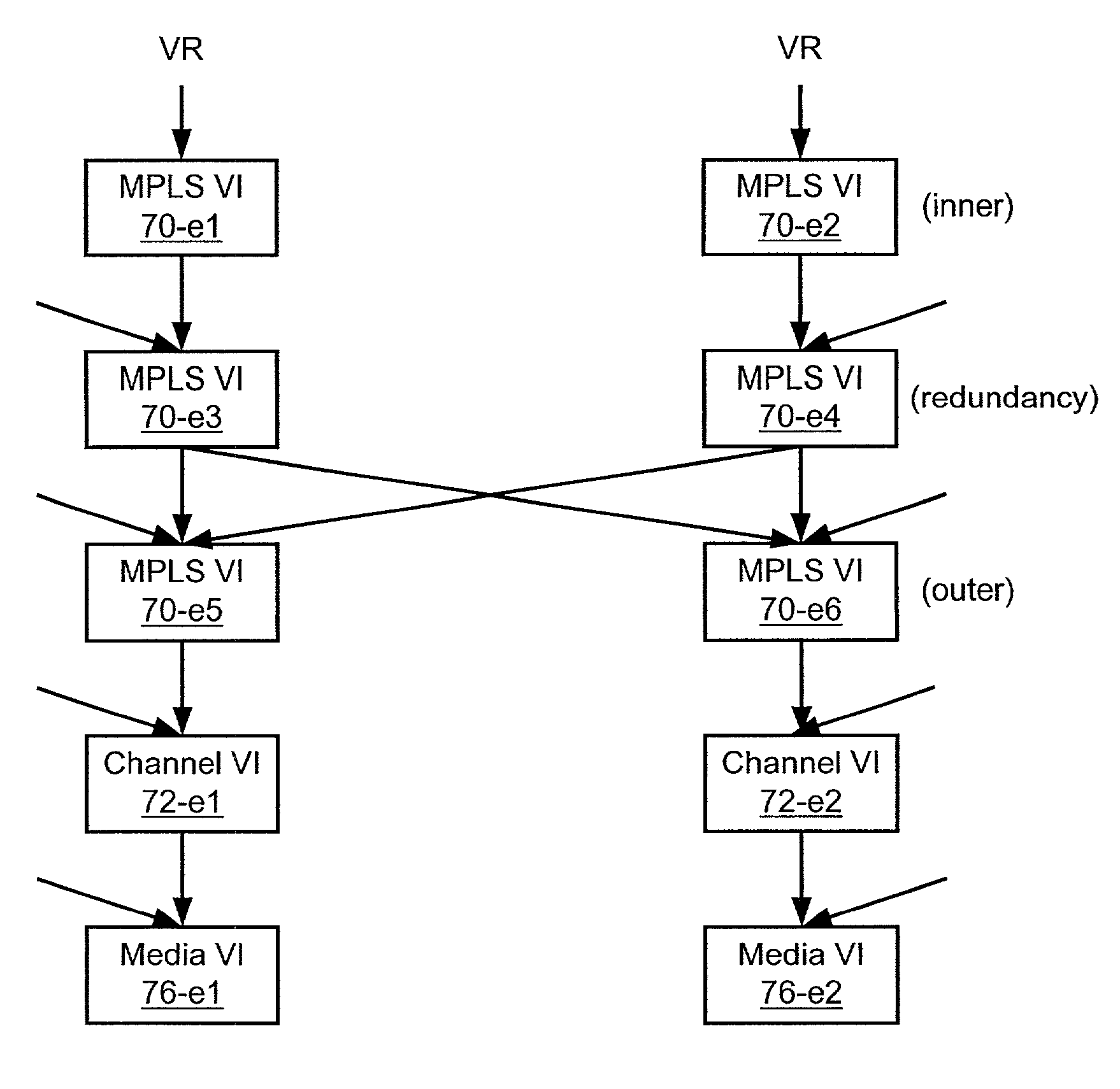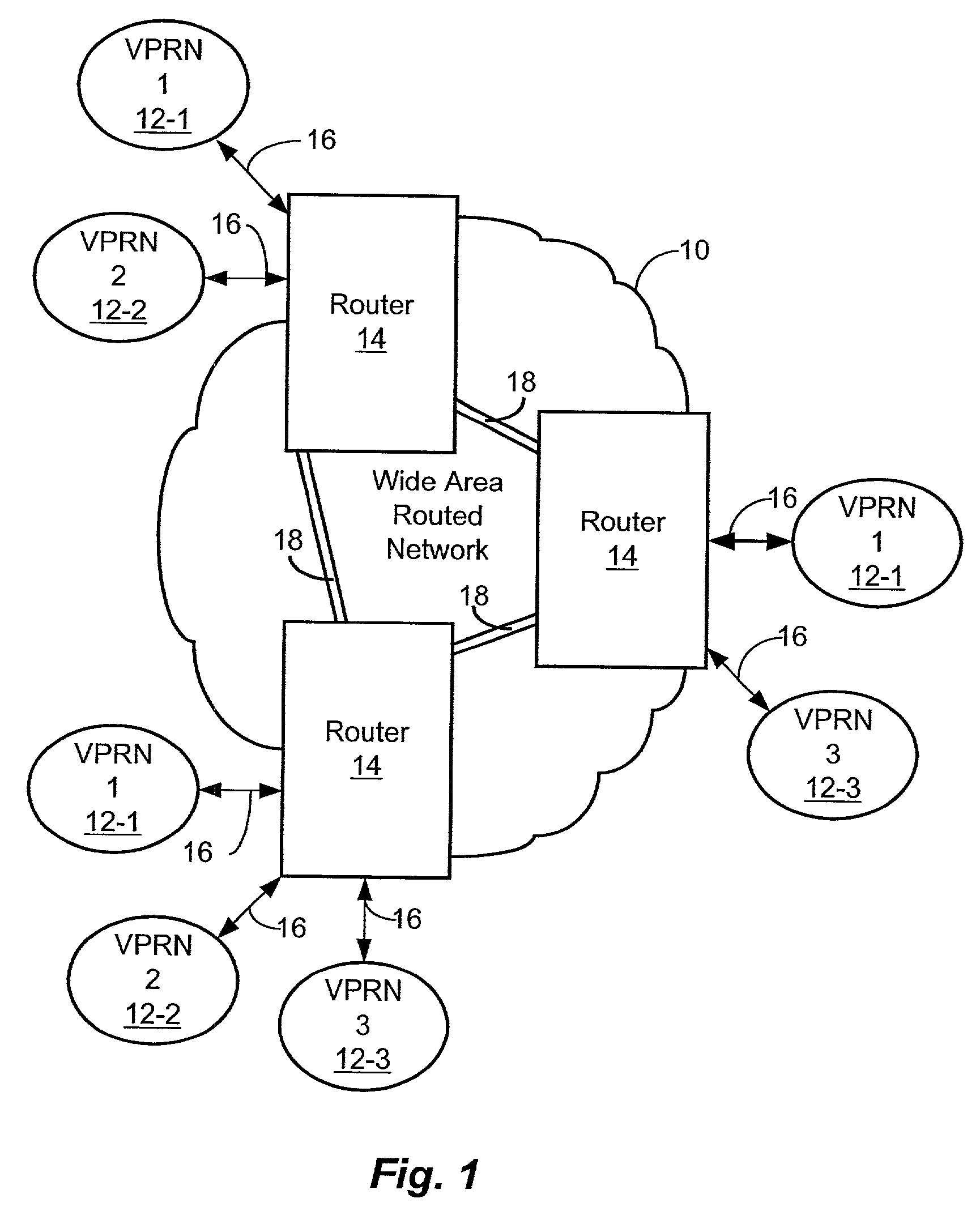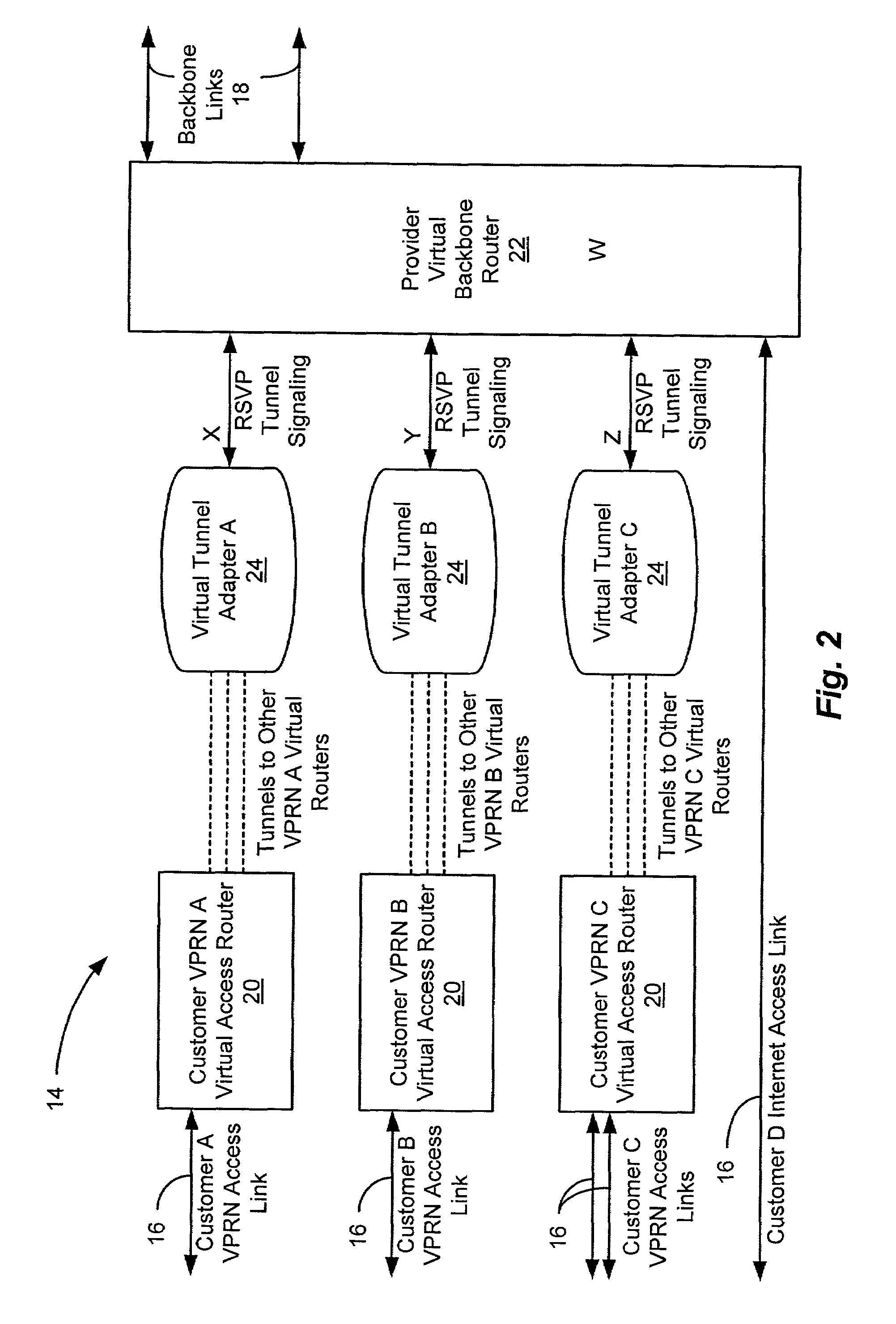Network device virtual interface
a network device and virtual interface technology, applied in the field of routed networks, can solve the problems of inability of routers to support sufficiently large routing tables, difficulty in correctly maintaining routing information in routers, and growth in network size and complexity
- Summary
- Abstract
- Description
- Claims
- Application Information
AI Technical Summary
Benefits of technology
Problems solved by technology
Method used
Image
Examples
Embodiment Construction
[0023]The disclosure of U.S. Provisional Patent Application No. 60 / 264,088 filed Jan. 25, 2001, is hereby incorporated by reference herein.
[0024]FIG. 1 shows a network in which a wide-area routed network 10 is utilized to carry traffic for a number of virtual private routed networks (VPRNs). Each VPRN includes corresponding VPRN subnetworks 12. In FIG. 1, VPRNs numbered 1 through 3 are shown, with each including corresponding subnetworks 12-1, 12-2 and 12-3. The wide-area routed network 10 includes a number of routers 14. Each router 14 has connections to access links 16 that connect the router 14 to local VPRN subnetworks 12, and has connections to backbone links 18 that connect the router 14 to other routers 14 in the wide-area routed network 10.
[0025]An example of the wide-area routed network 10 is a global network such as the Internet. In general, the wide-area routed network 10 has a given network address space and a defined set of communications protocols, including routing pr...
PUM
 Login to View More
Login to View More Abstract
Description
Claims
Application Information
 Login to View More
Login to View More - R&D
- Intellectual Property
- Life Sciences
- Materials
- Tech Scout
- Unparalleled Data Quality
- Higher Quality Content
- 60% Fewer Hallucinations
Browse by: Latest US Patents, China's latest patents, Technical Efficacy Thesaurus, Application Domain, Technology Topic, Popular Technical Reports.
© 2025 PatSnap. All rights reserved.Legal|Privacy policy|Modern Slavery Act Transparency Statement|Sitemap|About US| Contact US: help@patsnap.com



